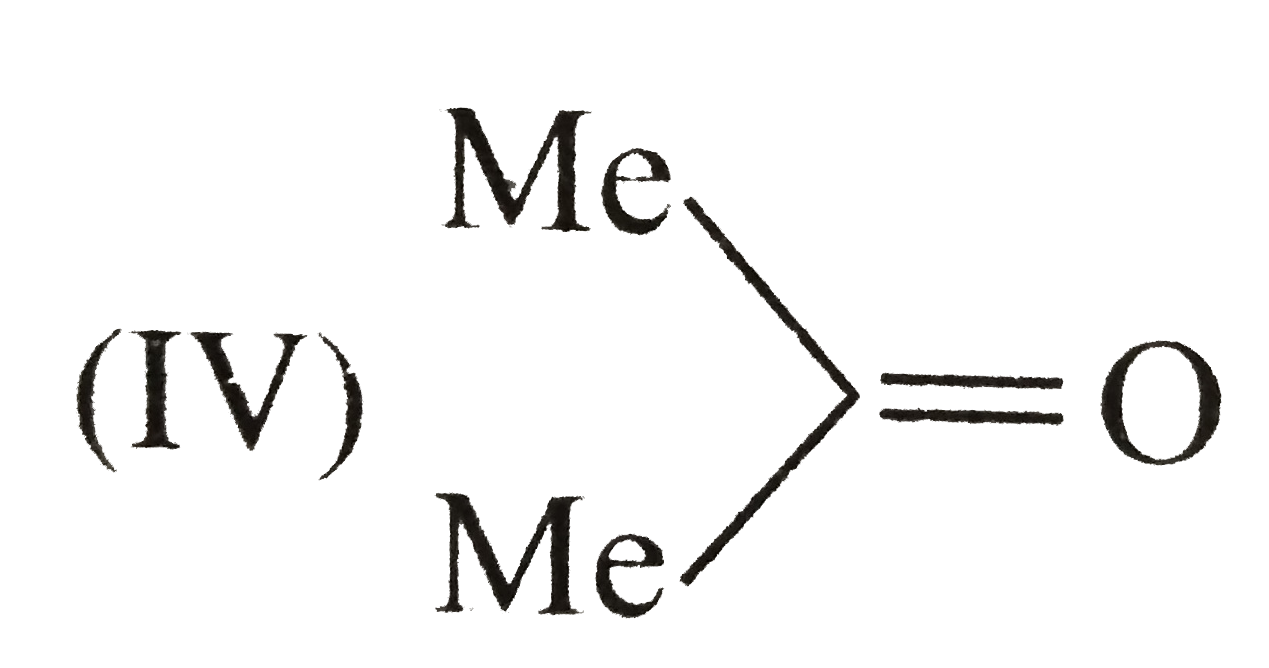The correct decreasing order of SN1 reactivity of the folliwng is:
I. PhCH2X. II. CH2=CHCH2X
III. Me2CHX, IV. C2H5X
(I)>(II)>(III)>(IV)
(IV)>(III)>(II)>(I)
(II)>(I)>(III)>(IV)
(IV)>(III)>(I)>(II)
The correct Answer is:a
To determine the correct decreasing order of SN1 reactivity for the given compounds, we need to analyze the stability of the carbocations that would form during the SN1 reaction mechanism. The stability of carbocations is crucial because the rate of an SN1 reaction is dependent on the formation of a stable carbocation intermediate.
1. Identify the Compounds:
- I. PhCH₂X (Benzyl halide)
- II. CH₂=CHCH₂X (Allylic halide)
- III. Me₂CHX (Tertiary halide)
- IV. C₂H₅X (Ethyl halide)
2. Determine the Type of Carbocation Formed:
- I. PhCH₂X will form a benzylic carbocation (PhCH₂⁺), which is highly stable due to resonance with the benzene ring.
- II. CH₂=CHCH₂X will form an allylic carbocation (CH₂=CH−CH₂⁺), which is also stable due to resonance with the double bond.
- III. Me₂CHX will form a tertiary carbocation (Me₂C⁺), which is stable due to hyperconjugation and inductive effects.
- IV. C₂H₅X will form a primary carbocation (C₂H₅⁺), which is the least stable among the four.
3. Rank the Stability of Carbocations:
- The stability order of carbocations is as follows:
- Benzylic > Allylic > Tertiary > Secondary > Primary
- Based on the carbocations formed:
- I (benzylic) > II (allylic) > III (tertiary) > IV (primary)
4. Establish the Order of SN1 Reactivity:
- Since the rate of SN1 reactions is directly related to the stability of the carbocation:
- PhCH₂X (I) > CH₂=CHCH₂X (II) > Me₂CHX (III) > C₂H₅X (IV)
5. Final Order:
- The correct decreasing order of SN1 reactivity is:
- I > II > III > IV
Conclusion:
The correct decreasing order of SN1 reactivity for the given compounds is:
I. PhCH₂X > II. CH₂=CHCH₂X > III. Me₂CHX > IV. C₂H₅X
- I. PhCH₂X (Benzyl halide)
- II. CH₂=CHCH₂X (Allylic halide)
- III. Me₂CHX (Tertiary halide)
- IV. C₂H₅X (Ethyl halide)
- I. PhCH₂X will form a benzylic carbocation (PhCH₂⁺), which is highly stable due to resonance with the benzene ring.
- II. CH₂=CHCH₂X will form an allylic carbocation (CH₂=CH−CH₂⁺), which is also stable due to resonance with the double bond.
- III. Me₂CHX will form a tertiary carbocation (Me₂C⁺), which is stable due to hyperconjugation and inductive effects.
- IV. C₂H₅X will form a primary carbocation (C₂H₅⁺), which is the least stable among the four.
- The stability order of carbocations is as follows:
- Benzylic > Allylic > Tertiary > Secondary > Primary
- Based on the carbocations formed:
- I (benzylic) > II (allylic) > III (tertiary) > IV (primary)
- Since the rate of SN1 reactions is directly related to the stability of the carbocation:
- PhCH₂X (I) > CH₂=CHCH₂X (II) > Me₂CHX (III) > C₂H₅X (IV)
- The correct decreasing order of SN1 reactivity is:
- I > II > III > IV
The correct decreasing order of SN1 reactivity for the given compounds is:
I. PhCH₂X > II. CH₂=CHCH₂X > III. Me₂CHX > IV. C₂H₅X
Topper's Solved these Questions
- BOOK - CENGAGE CHEMISTRY ENGLISHCHAPTER - AROMATIC COMPOUNDS AND ALKYL AND ARYL HALIDES EXERCISE - Exercises Assertion-Resoning Type1videos
AROMATIC COMPOUNDS AND ALKYL AND ARYL HALIDES
- BOOK - CENGAGE CHEMISTRY ENGLISHCHAPTER - AROMATIC COMPOUNDS AND ALKYL AND ARYL HALIDES EXERCISE - Exercises Assertion-Resoning11videos
AROMATIC COMPOUNDS AND ALKYL AND ARYL HALIDES
- BOOK - CENGAGE CHEMISTRY ENGLISHCHAPTER - AROMATIC COMPOUNDS AND ALKYL AND ARYL HALIDES EXERCISE - Exercises Single Correct Answer Type28videos
AROMATIC COMPOUNDS AND ALKYL AND ARYL HALIDES
- BOOK - CENGAGE CHEMISTRY ENGLISHCHAPTER - APPENDIX INORGANIC VOLUME 2EXERCISE - Short Answer Type179videos
APPENDIX INORGANIC VOLUME 2
- BOOK - CENGAGE CHEMISTRY ENGLISHCHAPTER - BIOMOLECULESEXERCISE - Exercises Archives (Analytical And Descriptive)8videos
BIOMOLECULES
Similar Questions
The decreasing order of the rate of bromination of the following compounds is:
I. PhN⊕Me3, II. PhCH2NMe3
III. PhMe, IV. PhNMe2View SolutionArrange the folliwing compounds in increasing order of SN−1 reactivity.
a. I.m ClCH2CH=CHCH2CH3
II. CH3C(Cl)=CHCH2CH3
III. CH3CH=CHCH2CH2Cl
IV. CH3CH=CHCH2(Cl)CH3
b. I. CH3CH2Br
II. CH2=CHCH(Br)CH3
III. CH2=CHBr
IV. CH3CH(Br)CH3
C. I. (CH3)3Cl, II. C6H5C(CH3)2Cl
III. (CH3)2CHCl, IV. CH3CH2CH2ClView SolutionThe decreasing order of the anti-knocking value of octane number of the following is: (I) CH4 (II) C2H6 (III) C3H8 (IV) C4H10
View SolutionThe order of decreasing SN1 reactivities of the halides
(I )CH3CH2CH2Cl (II) CH2=CHCHCICH3 (III) CH3CH2CHCICH3View SolutionThe decreasing order of acidic character of the following is:
(I) EtOH
(II) Me−COOH
MeOOC−CH2−COOMe
(IV) View Solution
View SolutionThe decreasing order of acidic character of the following is :
(I) CH3SH
(II) CH3OH
(III) H2O
(IV) EtOH.View SolutionThe increasing order of reactivity of the following halides for the SN1 reaction is
I.CH3CH(CI)CH2CH3
II.CH3CH2CH2Cl
III. p.−H3CO−C6H4−CH2ClView SolutionGive the decreasing order of covalent character of the following compounds.
a. I. GeCl2 II. GeCl4 III. SnCl2 IV. SnCl4
V. PbCl2 VI. PbCl4
b. I. CH4 II. NH3 III. H2O IV. HF
c. I. HF II. HCl III. HBr IV. HI
d. I. AgI II. NaI III. CuI IV. NaClView SolutionGive the order of reactivityh towards SN1 reaction of the following:
i. ClCH2CH=CH2
ii. CH3CH2CH2Cl
iii. CH3CH=CHClView SolutionDecreasing order of reactivity in Williamson's ether synthesis of the following .
I. Me3CCH2Br
II. CH3CH2CH2Br
III. CH2=CHCH2Cl
IV. CH3CH2CH2CH2ClView Solution

